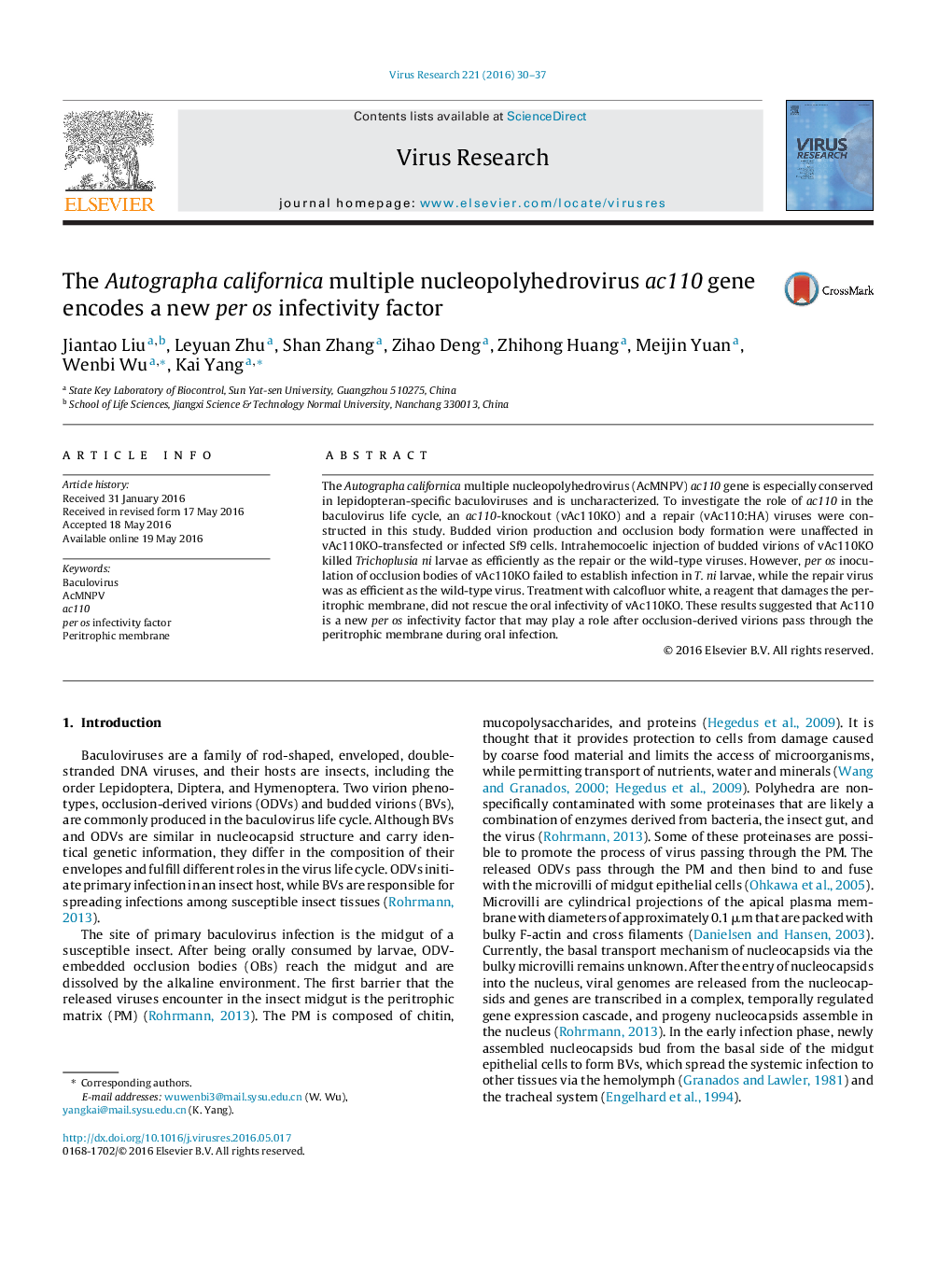| کد مقاله | کد نشریه | سال انتشار | مقاله انگلیسی | نسخه تمام متن |
|---|---|---|---|---|
| 3427857 | 1594336 | 2016 | 8 صفحه PDF | دانلود رایگان |

• The Autographa californica multiple nucleopolyhedrovirus ac110 gene is a late gene.
• The deletion of ac110 does not affect budded virion production and occlusion body formation.
• Ac110 is a new per os factor that is required for successful oral infection in larvae.
• Peritrophic membrane is not the functional target of Ac110.
The Autographa californica multiple nucleopolyhedrovirus (AcMNPV) ac110 gene is especially conserved in lepidopteran-specific baculoviruses and is uncharacterized. To investigate the role of ac110 in the baculovirus life cycle, an ac110-knockout (vAc110KO) and a repair (vAc110:HA) viruses were constructed in this study. Budded virion production and occlusion body formation were unaffected in vAc110KO-transfected or infected Sf9 cells. Intrahemocoelic injection of budded virions of vAc110KO killed Trichoplusia ni larvae as efficiently as the repair or the wild-type viruses. However, per os inoculation of occlusion bodies of vAc110KO failed to establish infection in T. ni larvae, while the repair virus was as efficient as the wild-type virus. Treatment with calcofluor white, a reagent that damages the peritrophic membrane, did not rescue the oral infectivity of vAc110KO. These results suggested that Ac110 is a new per os infectivity factor that may play a role after occlusion-derived virions pass through the peritrophic membrane during oral infection.
Journal: Virus Research - Volume 221, 2 August 2016, Pages 30–37